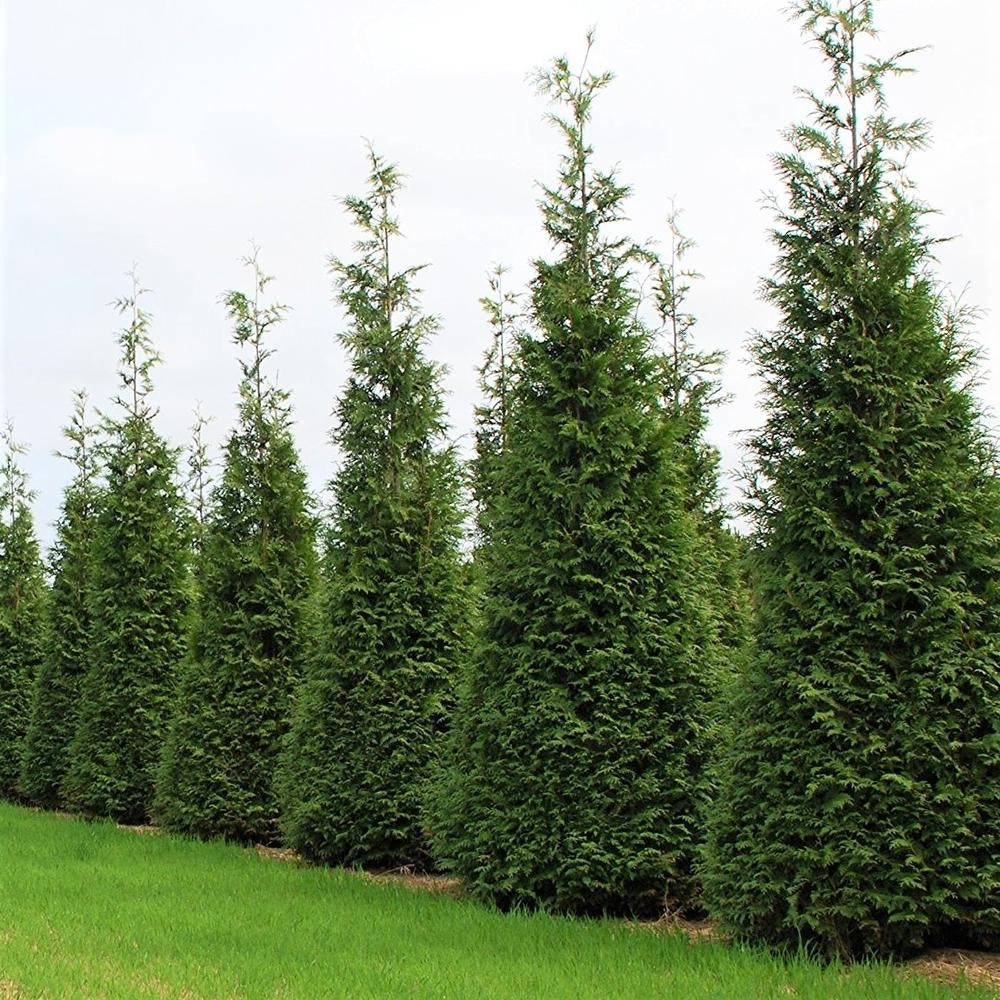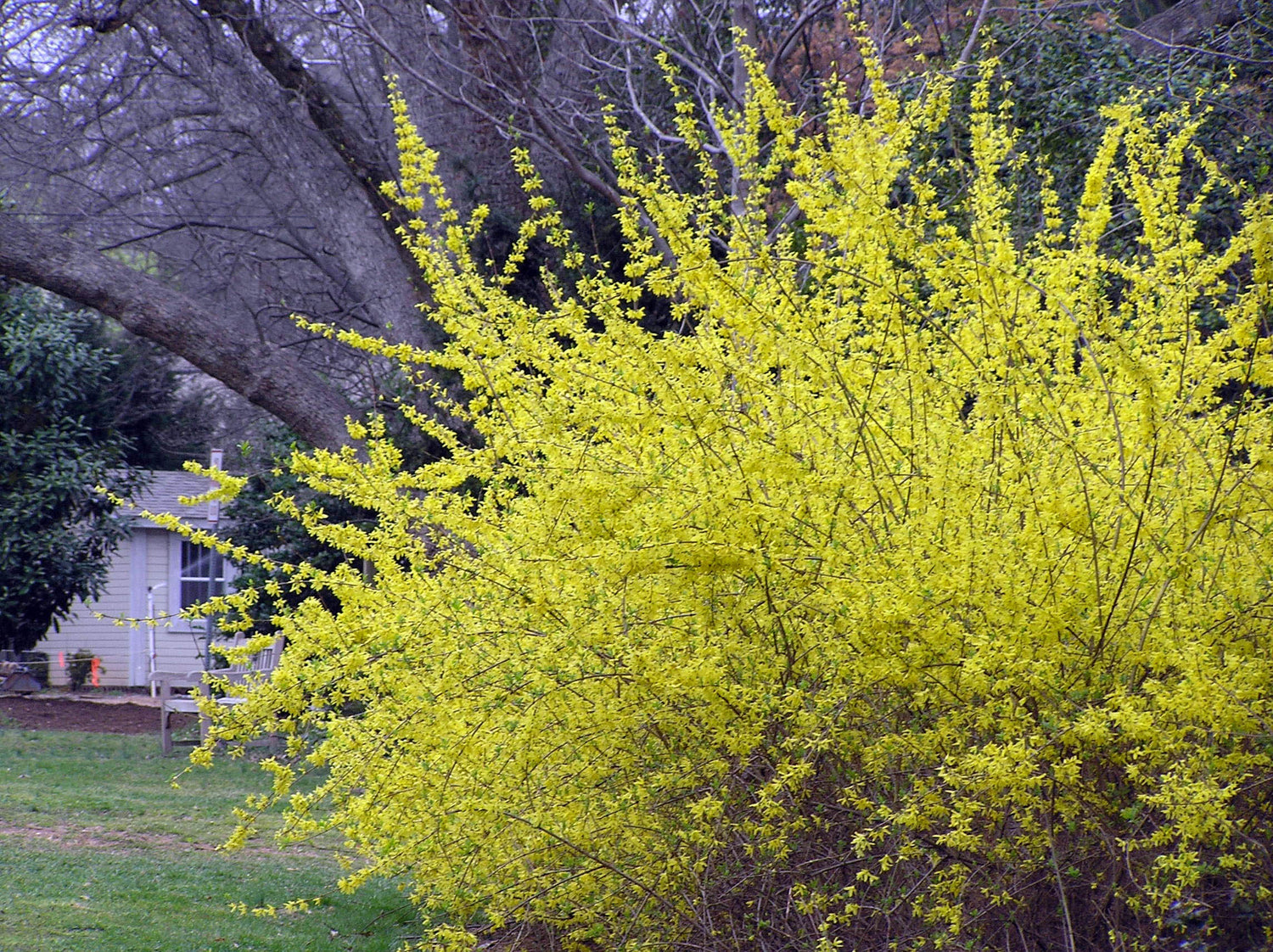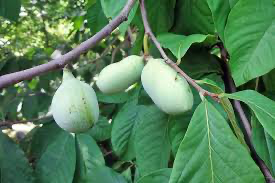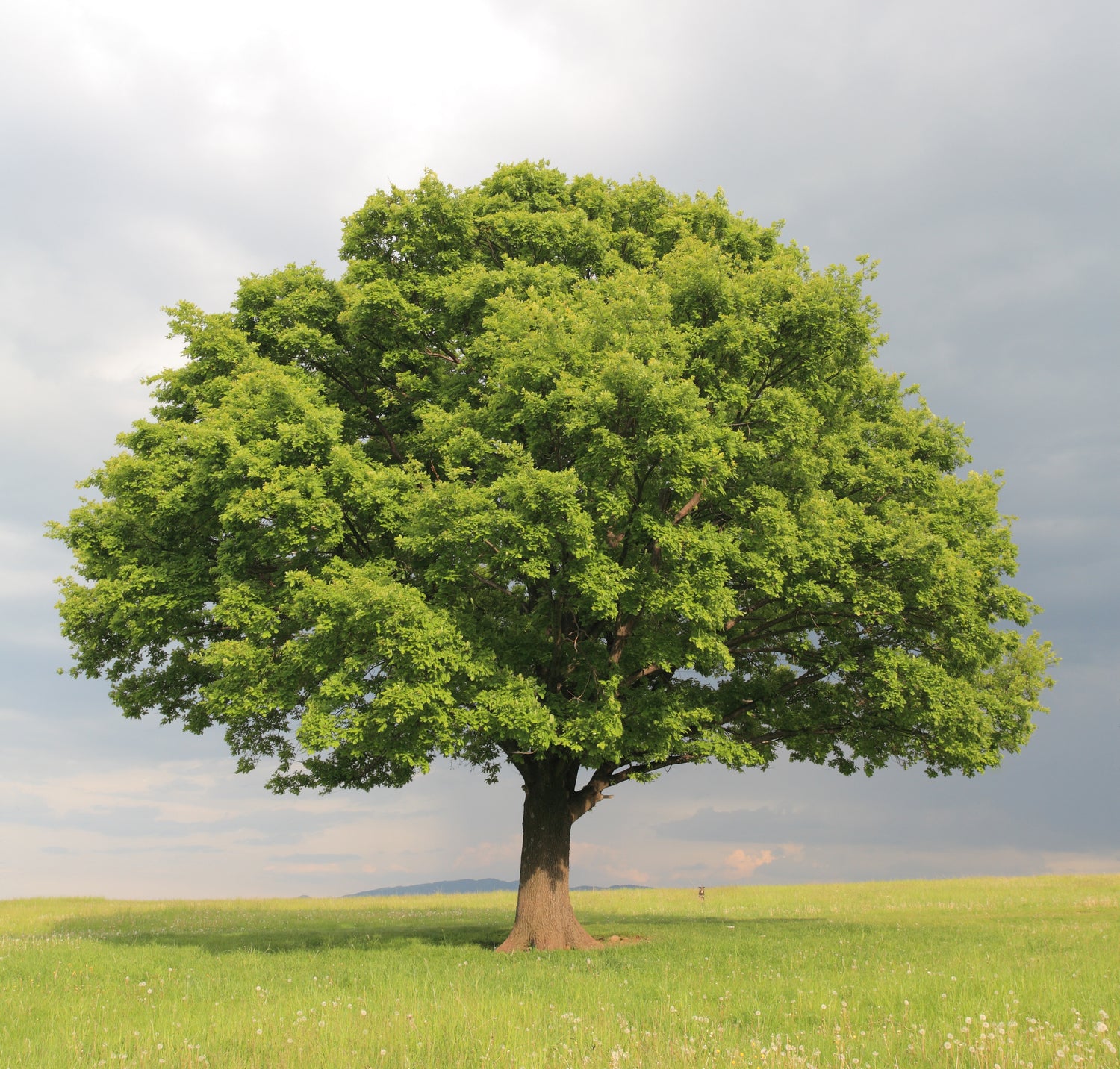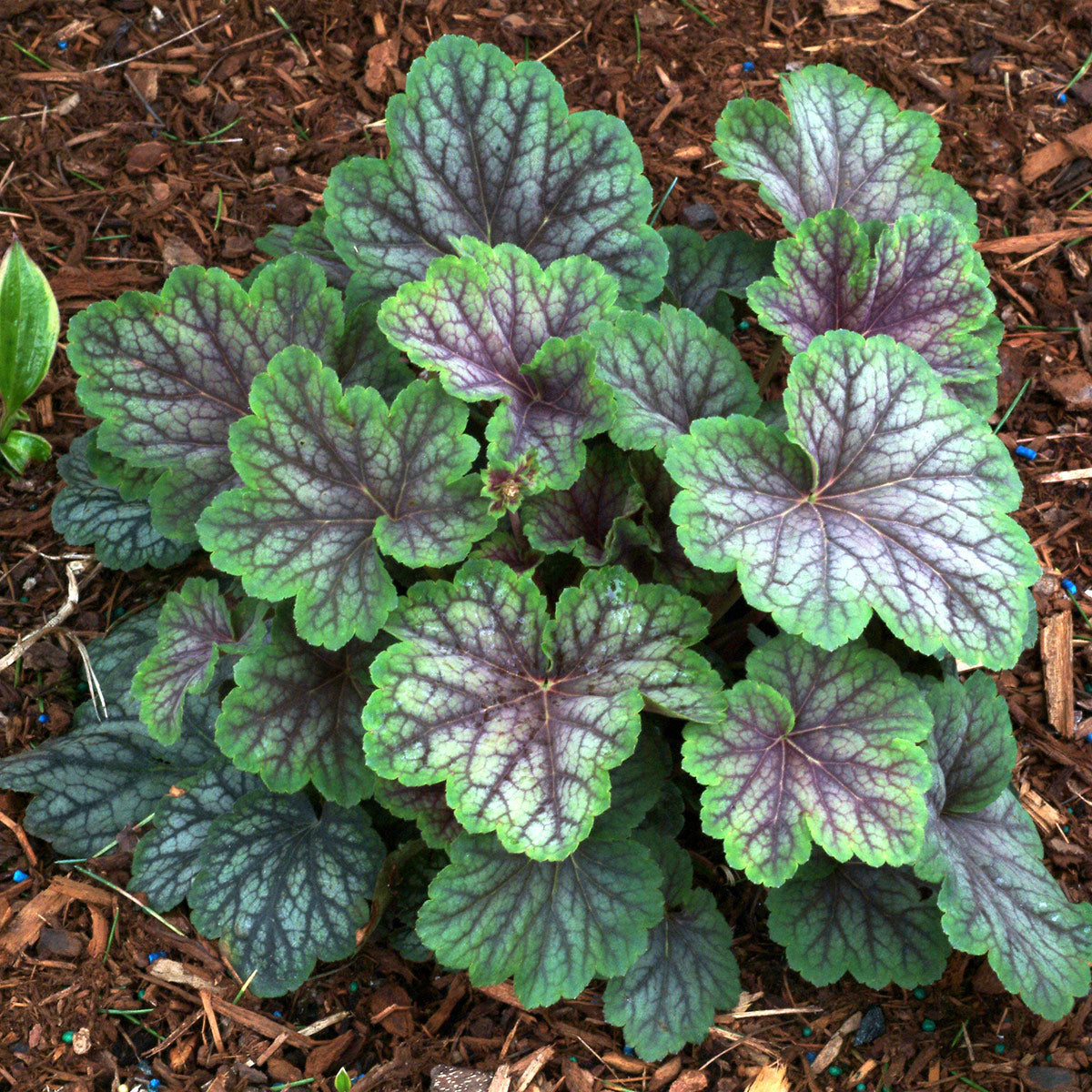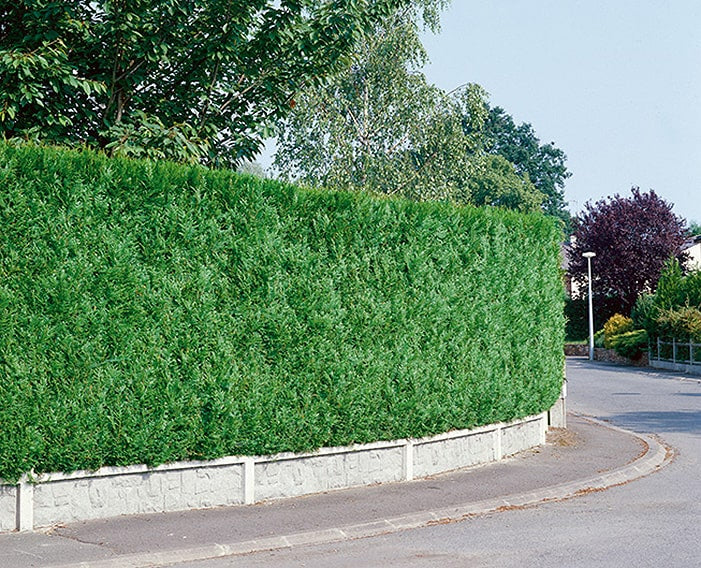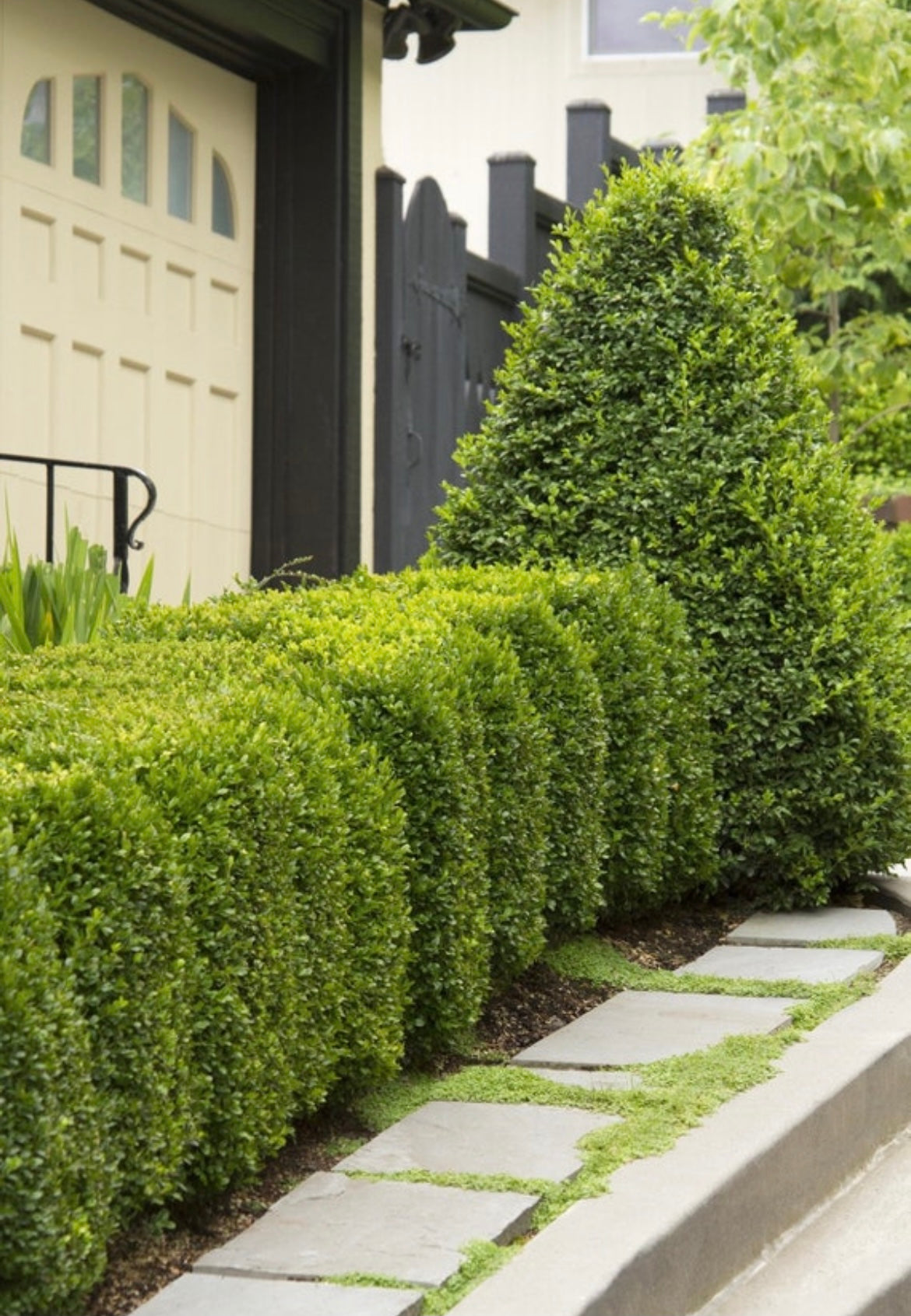

What is a Columnar Apple Tree?
Columnar apple trees are a unique variety that grows vertically rather than spreading out like traditional apple trees. They are perfect for small gardens, patios, and urban environments where space is limited. These trees produce fruit along the main stem, making them both space-efficient and highly productive.
Unlike standard apple trees that require extensive pruning to maintain their shape, columnar apple trees need specific pruning techniques to keep their vertical growth habit. Understanding these unique characteristics is crucial for effective pruning.
For those looking to expand their fruit tree collection, consider adding different varieties like the Johnathon Apple Tree or the classic Red Delicious Apple Tree to your garden. These trees complement the compact nature of columnar apple trees and offer a delightful variety of flavors.
Columnar apple trees are not only practical but also add a striking architectural element to your garden. Their upright growth makes them an attractive feature in any landscape, blending aesthetics with functionality. Understanding how to care for these unique trees will help you enjoy their beauty and productivity for years to come.
Why is Pruning Important for Columnar Apple Trees?
Pruning is a vital part of maintaining the health and productivity of your columnar apple tree. Without regular pruning, your tree can become overcrowded with branches, leading to poor air circulation and increased susceptibility to diseases and pests. Proper pruning techniques help to ensure that your tree remains healthy, produces high-quality fruit, and maintains its unique columnar shape.
Enhancing Fruit Production
One of the primary reasons to prune your columnar apple tree is to boost fruit production. By removing excess branches, you allow more sunlight to reach the interior of the tree, which is essential for the development of healthy, ripe apples. Pruning also reduces the competition for nutrients among the branches, directing more energy into fruit production.
Maintaining Tree Shape and Size
Columnar apple trees are prized for their vertical growth habit, which makes them ideal for small spaces. Pruning helps to maintain this shape, ensuring that the tree grows upward rather than outward. This is especially important if you're growing your tree in a confined space, such as a patio or balcony.
Preventing Diseases and Pests
Overcrowded branches can create a damp environment that is perfect for the development of fungal diseases and pests. By pruning your tree, you improve air circulation, which helps to keep the branches dry and reduces the risk of disease. Additionally, removing dead or diseased wood prevents the spread of infections and keeps your tree healthy.
Regular pruning also makes it easier to spot any signs of trouble early on. For example, you'll be more likely to notice pest infestations or disease symptoms when you're regularly trimming your tree. This proactive approach allows you to address problems before they become severe.
To ensure you're using the best tools for the job, consider the Fiskars Bypass Pruning Shears for precise cuts that promote quick healing and healthy growth. Additionally, the 28-37" Metal Anvil Loppers are ideal for tackling thicker branches, providing clean cuts without damaging the tree.
By understanding the importance of pruning and using the right techniques, you can keep your columnar apple tree healthy and productive, ensuring a bountiful harvest each season.
When is the Best Time to Prune a Columnar Apple Tree?
Timing is crucial when it comes to pruning your columnar apple tree. Pruning at the right time ensures optimal growth, reduces stress on the tree, and helps prevent diseases. Here’s a guide to help you determine the best times to prune your tree and what to look for:
Optimal Seasons for Pruning
Late Winter to Early Spring The best time to prune your columnar apple tree is during the dormant season, typically in late winter to early spring, before new growth starts. Pruning during this period encourages vigorous new growth in the spring and reduces the risk of disease.
Summer Pruning While the dormant season is ideal for major pruning, light pruning can also be done in the summer. This helps to manage excessive growth and can improve air circulation and light penetration through the canopy. Summer pruning is particularly useful for thinning out crowded areas of the tree.
Signs That Indicate It’s Time to Prune
Dead or Diseased Branches Remove any dead, damaged, or diseased branches as soon as you notice them. This can be done at any time of the year. Prompt removal prevents the spread of disease and keeps your tree healthy.
Overcrowded Branches If you notice that the branches are becoming too crowded, it’s a good sign that your tree needs thinning. Crowded branches can reduce air circulation and sunlight, leading to poor fruit quality and increased disease risk.
Suckers and Water Sprouts Suckers (shoots that grow from the base of the tree) and water sprouts (shoots that grow vertically from the branches) should be removed whenever they appear. These shoots divert energy from the main tree and can be pruned at any time.
Using the right tools for these tasks is essential. The 28-37" Metal Anvil Loppers are perfect for removing thicker branches, while the Fiskars Bypass Pruning Shears are ideal for precision cuts on smaller branches and shoots.
By understanding the optimal times and signs for pruning, you can ensure that your columnar apple tree remains healthy, productive, and well-shaped throughout the year. Proper timing not only enhances the tree's overall health but also maximizes fruit production, giving you a rewarding and fruitful gardening experience.
Tools Needed for Pruning Columnar Apple Trees
Having the right tools is essential for effective and efficient pruning. Using appropriate tools ensures clean cuts, reduces the risk of disease transmission, and makes the task much easier. Here are the essential tools you’ll need to prune your columnar apple tree, along with some recommended options:
Essential Pruning Tools
1. Hand Pruners (Pruning Shears) Hand pruners are indispensable for making precise cuts on smaller branches and twigs. They are perfect for trimming branches up to 1 inch in diameter. A high-quality pair of hand pruners, like the Fiskars Bypass Pruning Shears, is designed with sharp, precision-ground steel blades that make clean cuts, promoting quick healing and healthy growth.
2. Loppers For branches that are too thick for hand pruners, loppers are the tool of choice. Loppers have long handles, giving you the leverage needed to cut through branches up to 2 inches in diameter. The 28-37" Metal Anvil Loppers are a great option, featuring extendable handles for extra reach and an SK5 blade for durability and sharpness.
3. Pruning Saw A pruning saw is necessary for cutting branches that are too large for loppers. These saws are designed with a narrow blade that can fit into tight spaces and make smooth cuts. They are especially useful for removing larger, dead, or diseased branches.
4. Gloves Pruning can be rough on your hands, so a sturdy pair of gardening gloves is essential. Look for gloves that provide good grip and protection against thorns and rough branches.
5. Disinfectant To prevent the spread of disease, it's important to disinfect your tools before and after use. A simple solution of bleach and water or rubbing alcohol works well for this purpose.
Additional Considerations
Choosing the Right Tool for the Job Using the appropriate tool for each type of cut will make your pruning more effective and reduce stress on the tree. For example, use hand pruners for small branches and loppers or a pruning saw for larger limbs. Ensuring that your tools are sharp and clean will also make the task easier and healthier for your tree.
Safety First Always prioritize safety when pruning. Wear gloves to protect your hands, and consider wearing safety glasses to shield your eyes from debris. When using ladders, ensure they are stable and positioned on even ground.
For those interested in expanding their gardening toolkit, exploring various options like the Food Trees Collection can be beneficial. This collection includes different types of fruit trees that can complement your garden and provide a diverse range of produce.
By equipping yourself with the right tools and following proper pruning practices, you can keep your columnar apple tree healthy and productive. Regular maintenance with the right equipment will make your gardening experience more enjoyable and rewarding.
Step-by-Step Guide to Pruning Columnar Apple Trees
Pruning a columnar apple tree requires a systematic approach to ensure the tree remains healthy and productive. Follow these steps to prune your tree effectively:
Step 1: Prepare Your Tools and Workspace
Before you start pruning, make sure you have all the necessary tools ready and in good condition. Clean and sharpen your tools to ensure clean cuts and reduce the risk of disease transmission. Ensure you have the following tools on hand:
- Fiskars Bypass Pruning Shears for precise cuts on smaller branches.
- 28-37" Metal Anvil Loppers for cutting thicker branches.
- Pruning saw for larger branches.
- Disinfectant for cleaning your tools.
Clear the area around the tree to give yourself plenty of space to work and avoid any accidents.
Step 2: Identify and Remove Dead or Diseased Branches
Start by examining your tree for any dead, damaged, or diseased branches. These should be removed first to prevent the spread of disease and to promote healthy growth. Dead branches will often be brittle and break easily, while diseased branches may show signs of discoloration, unusual growths, or fungal infections.
- How to Remove: Use your hand pruners or loppers to cut the dead or diseased branches back to healthy wood. Make clean cuts at a slight angle to allow water to run off, which helps prevent further disease.
Step 3: Trim Excess Growth and Suckers
Columnar apple trees tend to produce excess growth and suckers, which are vigorous shoots that grow from the base of the tree. These can divert energy from the main trunk and should be removed to maintain the tree’s vertical shape.
- How to Identify: Suckers usually grow straight up from the base or roots of the tree and can be distinguished by their rapid, vertical growth.
- How to Remove: Use your hand pruners to cut suckers as close to the base as possible. For thicker shoots, use the 28-37" Metal Anvil Loppers.
Step 4: Shape the Tree for Structural Integrity
The primary goal when shaping your columnar apple tree is to maintain its upright growth habit. This involves thinning out crowded branches and ensuring that the tree has a balanced structure.
- How to Thin: Selectively remove branches that are crossing or rubbing against each other. This not only shapes the tree but also improves air circulation and light penetration.
- How to Shape: Trim back any side branches that are growing too long, cutting them back to a bud that is facing the direction you want the branch to grow.
For more detailed information on maintaining different types of fruit trees, you can explore resources like the Ultimate Guide to Growing Seedless Concord Grapes in Your Backyard.
By following these steps, you'll help your columnar apple tree thrive, ensuring it remains healthy and productive. Regular pruning, done correctly, can significantly enhance the tree's fruit yield and longevity.
Common Mistakes to Avoid When Pruning Columnar Apple Trees
Even with the best intentions, it's easy to make mistakes when pruning columnar apple trees. Avoiding these common pitfalls can ensure your tree remains healthy and continues to produce high-quality fruit. Here are some of the most common mistakes and how to avoid them:
Over-Pruning or Under-Pruning
Over-Pruning:
- Impact: Removing too much of the tree at once can stress the tree, reduce fruit production, and leave it vulnerable to diseases and pests.
- Solution: Follow the rule of thumb to never remove more than 20-30% of the tree’s canopy in a single year. Focus on removing dead or diseased wood, thinning crowded areas, and maintaining the tree’s shape without excessive cutting.
Under-Pruning:
- Impact: Neglecting to prune regularly can lead to overcrowded branches, poor air circulation, and reduced sunlight penetration, all of which can negatively impact fruit quality and increase the risk of disease.
- Solution: Schedule regular pruning sessions, particularly in late winter to early spring, to maintain the tree’s health and structure.
Improper Cutting Angles
Impact: Incorrect cutting angles can lead to water pooling on the cut surface, which promotes rot and disease.
- Solution: Make cuts at a slight angle (45 degrees) to allow water to run off. This helps the tree heal more quickly and reduces the risk of infections.
Neglecting Tool Maintenance
Impact: Using dull or dirty tools can cause ragged cuts, increasing the risk of disease and making it harder for the tree to heal.
- Solution: Keep your tools clean and sharp. Disinfect your tools before and after each use with a solution of bleach and water or rubbing alcohol to prevent the spread of disease.
For instance, using high-quality tools like the Fiskars Bypass Pruning Shears ensures precise cuts, while the 28-37" Metal Anvil Loppers are perfect for handling thicker branches without damaging the tree.
Ignoring Seasonal Timing
Impact: Pruning at the wrong time of year can stress the tree and lead to poor growth and fruit production.
- Solution: Stick to pruning during the dormant season (late winter to early spring) for major cuts. Light pruning can be done in the summer to manage excessive growth, but avoid heavy pruning during this time.
Not Removing Suckers and Water Sprouts
Impact: Suckers and water sprouts divert energy from the main tree, leading to reduced fruit production and a weakened structure.
- Solution: Regularly inspect your tree and remove any suckers and water sprouts as soon as they appear. Use your hand pruners or loppers to cut them back to the base.
For more tips on maintaining various types of trees and shrubs, you can refer to articles such as the Where to Find the Best Haskap Berry Plants for Your Garden, which provides additional insights into effective gardening practices.
By avoiding these common mistakes, you can ensure your columnar apple tree remains healthy and productive, providing you with delicious fruit for years to come. Regular, mindful pruning is key to a thriving tree.
Maintaining a Healthy Columnar Apple Tree Through Pruning
Consistent and mindful pruning is crucial for maintaining the health and productivity of your columnar apple tree. Here’s a guide to ensure your tree stays in top shape year-round:
Seasonal Care Tips and Pruning Schedule
Late Winter to Early Spring: Dormant Season Pruning
- Why: Pruning during the dormant season encourages robust new growth in the spring. It’s the best time for major structural cuts since the tree is not actively growing, reducing stress and the risk of disease.
- What to Do: Focus on removing dead, damaged, or diseased branches. Thin out crowded areas to improve air circulation and light penetration. Shape the tree to maintain its vertical growth habit.
Summer: Light Maintenance Pruning
- Why: Summer pruning helps control excessive growth and can enhance air circulation and light penetration, which are vital for fruit ripening.
- What to Do: Perform light pruning to remove suckers and water sprouts, and trim any excessively long branches. Avoid heavy cuts during this time to prevent stressing the tree.
Fall: Post-Harvest Inspection
- Why: After harvesting, it’s a good time to assess the overall health of your tree and prepare it for winter.
- What to Do: Remove any remaining dead or diseased branches. Clean up fallen leaves and debris around the base of the tree to reduce the risk of pests and disease.
Long-Term Benefits of Consistent Pruning
Enhanced Fruit Quality and Yield Regular pruning ensures that your tree directs its energy towards producing high-quality fruit rather than excessive foliage. By thinning the branches, you allow more sunlight to reach the fruit, resulting in better color, size, and flavor.
Improved Tree Structure and Longevity Pruning helps to maintain the structural integrity of your columnar apple tree, preventing it from becoming too top-heavy or unbalanced. This is particularly important for columnar varieties, which need to maintain their upright growth habit. A well-pruned tree is more resistant to wind and storm damage, ensuring a longer lifespan.
Disease and Pest Prevention By removing dead or diseased branches and maintaining good air circulation, you significantly reduce the risk of fungal infections and pest infestations. Regularly cleaning your tools, such as the Fiskars Bypass Pruning Shears and 28-37" Metal Anvil Loppers, helps prevent the spread of pathogens.
Aesthetic Appeal A well-pruned columnar apple tree is not only productive but also visually appealing. Its upright, tidy form makes it an attractive addition to any garden or patio, adding both beauty and functionality to your space.
For more comprehensive guidance on maintaining different types of fruit trees, check out resources like the Ultimate Guide to Growing Seedless Concord Grapes in Your Backyard.
FAQs: Columnar Apple Tree Pruning Techniques
Pruning can seem daunting, especially for beginners. Here are some frequently asked questions about pruning columnar apple trees, along with detailed answers to help you feel more confident in your tree care routine:
How often should I prune my columnar apple tree?
- Answer: Prune your columnar apple tree at least once a year, ideally during the dormant season (late winter to early spring). Light maintenance pruning can be done in the summer to manage excessive growth and remove suckers.
Can I prune my tree during the fruiting season?
- Answer: While major pruning should be avoided during the fruiting season, you can perform light pruning if necessary. This includes removing suckers, water sprouts, and any damaged or diseased branches. Avoid heavy cuts to prevent stressing the tree and affecting fruit production.
What should I do if I accidentally over-prune my tree?
- Answer: If you accidentally over-prune, focus on providing extra care to your tree to help it recover. Ensure it gets adequate water and nutrients, and protect it from extreme weather conditions. Over-pruning can stress the tree, but with proper care, it can recover over time.
How can I tell if a branch is dead or diseased?
- Answer: Dead branches are often brittle, dry, and break easily. They may also have no leaves or buds. Diseased branches may show signs of discoloration, unusual growths, or fungal infections. If in doubt, cut a small section of the branch—if the interior is brown or dry, it's likely dead or diseased.
What is the best way to remove suckers and water sprouts?
- Answer: Suckers and water sprouts should be removed as soon as you notice them. Use hand pruners or loppers to cut them as close to the base as possible. Removing these shoots prevents them from diverting energy away from the main tree. For precision, the Fiskars Bypass Pruning Shears are excellent, and for thicker shoots, the 28-37" Metal Anvil Loppers are ideal.
How can I maintain the vertical growth habit of my columnar apple tree?
- Answer: Regular pruning helps maintain the vertical growth habit. Focus on thinning out horizontal branches and shaping the tree to encourage upward growth. Remove any branches that grow outwards or cross over each other to keep the tree's structure balanced.
Can I use the same tools for different types of fruit trees?
- Answer: Yes, you can use the same pruning tools for different types of fruit trees. Just ensure that you clean and disinfect your tools between uses to prevent the spread of disease. Resources like the Food Trees Collection offer a variety of fruit trees that you can manage using similar tools and techniques.
Is it necessary to disinfect my tools after every use?
- Answer: It's a good practice to disinfect your tools after each use, especially when dealing with diseased branches. This helps prevent the spread of pathogens to healthy parts of the tree or to other trees in your garden. A solution of bleach and water or rubbing alcohol works well for disinfection.
For more insights into effective gardening practices, check out articles like Where to Find the Best Haskap Berry Plants for Your Garden, which provides valuable tips for maintaining a healthy and productive garden.
By addressing these common questions and concerns, you can feel more confident in your ability to prune your columnar apple tree effectively, ensuring it remains healthy and fruitful for years to come.







